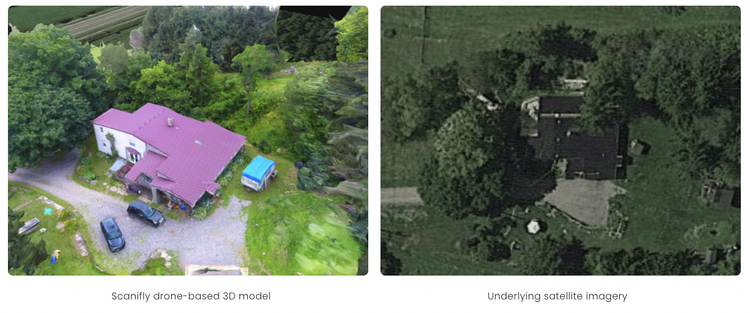The vast majority of revisions, true-ups, and redesigns don’t just change the solar array—it changes a Sales Rep’s commission.
Further, operational slowdowns due to revisions, repermittings, missed information, or procurement mixups mean delays when the project is finished and when Reps get paid.
Sales Reps are put in a tough spot.
On the one hand, they could undersell the system so their commission is only ever revised upward, but this “conservative” approach leads to reduced revenue for the Contractor and smaller Rep commissions. And if the homeowner later realizes they could have had a higher offset, they may not be happy.
On the other hand, Reps can sell to the best of their ability—knowing they have inferior remote data or – worse – oversell the system to juice commissions and hope the homeowner goes for it.
Either way, the Rep is stuck. The solution is for Sales to advocate for a less subjective operational process with a more transparent workflow. This doesn’t just preserve their commission; it also makes the entire project more transparent and fair.
How Operational Errors Impact Rep Commission
While most Reps expect some delta between initial and final designs, operational issues from remote data often cause a much bigger difference than should occur.
-
Inaccurate measurements: Satellite images can have a 10%+ discrepancy compared to actual on-site measurements. On a planned array that’s 7 panels wide by 3 tall, you could easily lose 3-6 panels from measurement inaccuracy—14% to 28% of the whole array.
-
Missing roof obstructions: Satellite imagery cannot detect all roof obstructions, which can result in losing panels in the middle of the array.
-
Poor site audits leading to call-offs or delays: Even with perfect measurements, shade analysis, and all obstructions documented, Operations teams may not properly audit the site for safety ahead of installation. Examples can be roof heights, soft spots on the roof, and ladder access. If this occurs, the whole project is put in jeopardy along with Rep commission.
-
Inaccurate shade analysis: If shading is done incorrectly — for instance, a tree improperly modeled during the sales process— still achieving a 100% offset or upholding the production guarantee will be challenging. Often, adding more panels is needed. This could kill the deal or, if the homeowner accepts a lower offset, impact commissions.
-
Roof plane changes: Measurement or shade inaccuracy may require adjusting the plan to put panels on a different roof plane. In some jurisdictions, this can result in a 60-90 day delay for re-permitting, severely impacting when a Rep gets paid. An example we see is adding modules to a garage or a less advantageous roof.
And then there’s the final risk: clawbacks. If issues are caught before installation, then commissions are adjusted based on the revisions or redesigns. But if issues are caught after installation, a Rep may have some or all of their commission clawed back when the Contractor has to make it right for the homeowner.
Despite having little control over these operational issues, Reps typically feel the brunt of homeowner anger and see their commissions take a serious hit.
How Deal Structures Impact Commissions
The other way that Reps can lose commission is through deal structuring.
Let’s say, for instance, that you sell an array priced at $3.00 per watt. The deal may have a red line agreement, which is the minimum price that must go to the Installer. If that red line is $2.50, you end up with $0.50 commission per watt on the deal. But if you can only sell it for $2.75 per watt, your commission drops—the Installer gets the same fixed price.
Within a red line sales approach, you also have to manage “adders” — in some cases, changes or additions to make the project possible, such as revisions or electrical panel upgrades.
While larger issues, such as a roof replacement, will be forwarded to the homeowner, smaller expenses such as tree trimming, small roof repairs, or additional truck rolls to collect more data may be taken out of Rep commission. With the average revision costing $750, you could easily lose a significant chunk of commission.
How Reliable Operations Maximize Earnings

While operational issues are not a Rep’s fault, they directly impact your ability to get paid—we recommend advocating for a more transparent operations process.
Drones, for example, are easy to learn and fly, and generate near-perfect accuracy every time. Or if you layer different data sources during preliminary designs, you get more accurate data from the start.
Leveraging technology and using a single operational platform from prelim to commissioning both preserves your commission and helps the entire team.
-
Surveyors can minimize time spent on the roof, reducing safety risks.
-
Designers don’t have to make estimates or force additional truck rolls.
-
Contractor leadership saves significant time and money, moving projects along and increasing capacity with the existing team.
Better Systems, More Confident Revenue

Bringing technology into your operational process results in a smoother project that’s more accurate from the start. Just ask Solar Energy Services, which cut its project timelines by 80% when they implemented technology and new processes. Similarly, Dynamic Solar achieved a 100% fit rate without revisions by using new tech.
When Sales collaborates with Operations to bring in best-in-class technology, the whole organization wins. It’s not just about preserving Rep commissions or talent retention, it’s about smoothing the entire project process so every stakeholder can do their best work.






